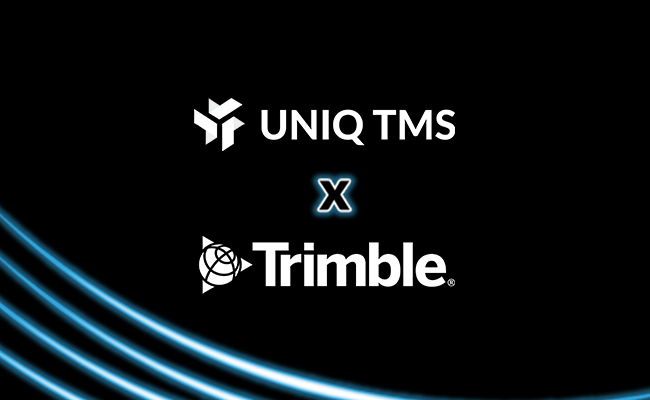
Are you considering using a TMS platform to organize your fleet?
For starters, it’s a great idea. The world of transportation and logistics continues to progress towards using technology to manage day-to-day operations. But once you’ve decided which TMS you’re going to use, it comes time to implement it and get yourself and employees familiar with how its going to work.
So, let this step-by-step guide walk you through the process, and make your life just a little bit easier as you get started with a TMS platform.
Benefits of Implementing a TMS Platform
The implementation of a TMS platform can yield numerous benefits for businesses, including:
- Cost savings: Optimizing routes and loads can lead to reduced transportation costs, lower fuel consumption, and improved resource utilization. By leveraging advanced algorithms and real-time data, businesses can identify the most cost-effective transportation options and eliminate inefficiencies.
- Improved efficiency: Automating manual processes and streamlining workflows save time and effort, enabling teams to focus on strategic tasks. With a TMS platform, businesses can eliminate time-consuming paperwork, reduce manual errors, and improve overall productivity.
- Enhanced visibility: Real-time tracking and visibility into the transportation process allow for better management and proactive problem-solving. By having a clear view of their shipments’ status and location, businesses can anticipate potential issues, communicate proactively with customers, and ensure smooth operations.
- Greater customer satisfaction: Delivering goods on time, accurately, and efficiently improves customer service and fosters long-term relationships. With a TMS platform, businesses can provide accurate delivery estimates, proactively communicate any delays, and offer exceptional customer experiences.
- Data-driven decision-making: Reporting and analytics provide insights into transportation performance, enabling businesses to identify trends, patterns, and areas for improvement. By leveraging data-driven insights, businesses can optimize their transportation strategies, negotiate better rates with carriers, and continuously improve their supply chain operations.
As businesses navigate the complex world of transportation and logistics, a TMS platform emerges as a powerful tool that not only streamlines operations but also drives strategic growth. By harnessing the capabilities of a TMS platform, businesses can unlock new levels of efficiency, visibility, and profitability in their supply chain.
Preparing for TMS Platform Implementation

Implementing a Transportation Management System (TMS) platform is a significant undertaking that can revolutionize the way your business handles transportation logistics. It requires meticulous preparation and strategic planning to ensure a seamless integration that maximizes efficiency and cost-effectiveness.
Before diving into the implementation process, it is crucial to conduct a comprehensive assessment of your current transportation system and processes.
This involves identifying pain points, bottlenecks, and inefficiencies that could be addressed through the adoption of a TMS platform. Additionally, evaluating your existing technology infrastructure is essential to determine its compatibility and readiness for the new system. This thorough assessment will serve as the foundation for a tailored implementation strategy that meets your specific needs.
Assessing Your Current System
The first step is to assess your current transportation system and processes. Identify pain points, bottlenecks, and areas that can be improved. Evaluate your current technology infrastructure and determine if it can support the implementation of a TMS platform. This assessment will provide valuable insights into your needs and goals.
Furthermore, it is imperative to forecast future growth and scalability requirements when evaluating your current system. A TMS platform should not only address your current challenges but also accommodate your business’s expansion and evolving needs. By taking a holistic view of your operations, you can ensure that the implemented solution is not only effective in the short term but also sustainable in the long run.
Identifying Your Needs and Goals
Clearly define your needs and goals for implementing a TMS platform. What are the specific challenges you want to address? What objectives do you hope to achieve? By clearly outlining your needs and goals, you can align the implementation process with your business priorities and ensure a successful outcome.
Moreover, involving key stakeholders from different departments in the needs and goals identification process is essential for gaining diverse perspectives and buy-in.
Collaborating with representatives from logistics, IT, operations, and finance departments can provide a comprehensive understanding of the organization’s requirements and facilitate a more robust implementation strategy.
Assembling Your Implementation Team
Implementing a TMS platform is a collaborative effort that requires involvement from various stakeholders within your organization.
Assemble a dedicated implementation team consisting of individuals from different departments, such as logistics, IT, operations, and finance.
Assign clear roles and responsibilities to each team member and establish effective communication channels.
Furthermore, fostering a culture of collaboration and open communication within the implementation team is crucial for overcoming challenges and ensuring a smooth deployment process.
Regular meetings, progress updates, and feedback sessions can help streamline decision-making and keep all team members aligned towards the common goal of successful TMS platform implementation.
Choosing the Right TMS Platform

Choosing the right Transportation Management System (TMS) platform is a critical decision that can significantly impact the success of your supply chain operations. A TMS is a crucial tool that helps streamline transportation processes, optimize routes, reduce costs, and enhance overall efficiency.
When selecting a TMS platform, it is essential to consider not only your current requirements but also your future needs as your business grows.
A scalable TMS can adapt to your evolving transportation needs, ensuring that you can continue to meet customer demands and stay competitive in the market. To learn more about choosing the right TMS platform for your business, you can click here. [link to blog]
The Implementation Process
Now that you’ve chosen the right TMS platform, it’s time to move forward with its implementation.
Step 1: Planning the Implementation
Create a detailed implementation plan that outlines key milestones, activities, and timelines. Define the scope of the implementation, set realistic expectations, and allocate necessary resources. Communicate the plan to all stakeholders and gather their inputs and feedback.
Step 2: Configuring the TMS Platform
Work closely with the TMS platform provider to configure the system according to your specific business requirements. This includes setting up user access, defining transportation rules and parameters, integrating with existing systems, and customizing workflows. Conduct thorough testing and iterate if necessary.
Step 3: Testing the TMS Platform
Before going live, conduct comprehensive testing of the implemented TMS platform. Verify its functionality, performance, and integration with other systems. Test different transportation scenarios and workflows to ensure optimal performance and identify any potential issues or bugs.
With proper planning, diligent execution, and ongoing monitoring and refinement, implementing a TMS platform can revolutionize your transportation management processes and unlock a range of benefits for your business. Embrace the power of technology to streamline your logistics and stay ahead in today’s competitive business landscape.
Ready to Transform Your Transportation Management?
Discover how Uniq TMS can streamline your logistics operations, enhance efficiency, and boost your bottom line. Click here to learn more and explore our innovative solutions designed to meet your unique transportation needs.

